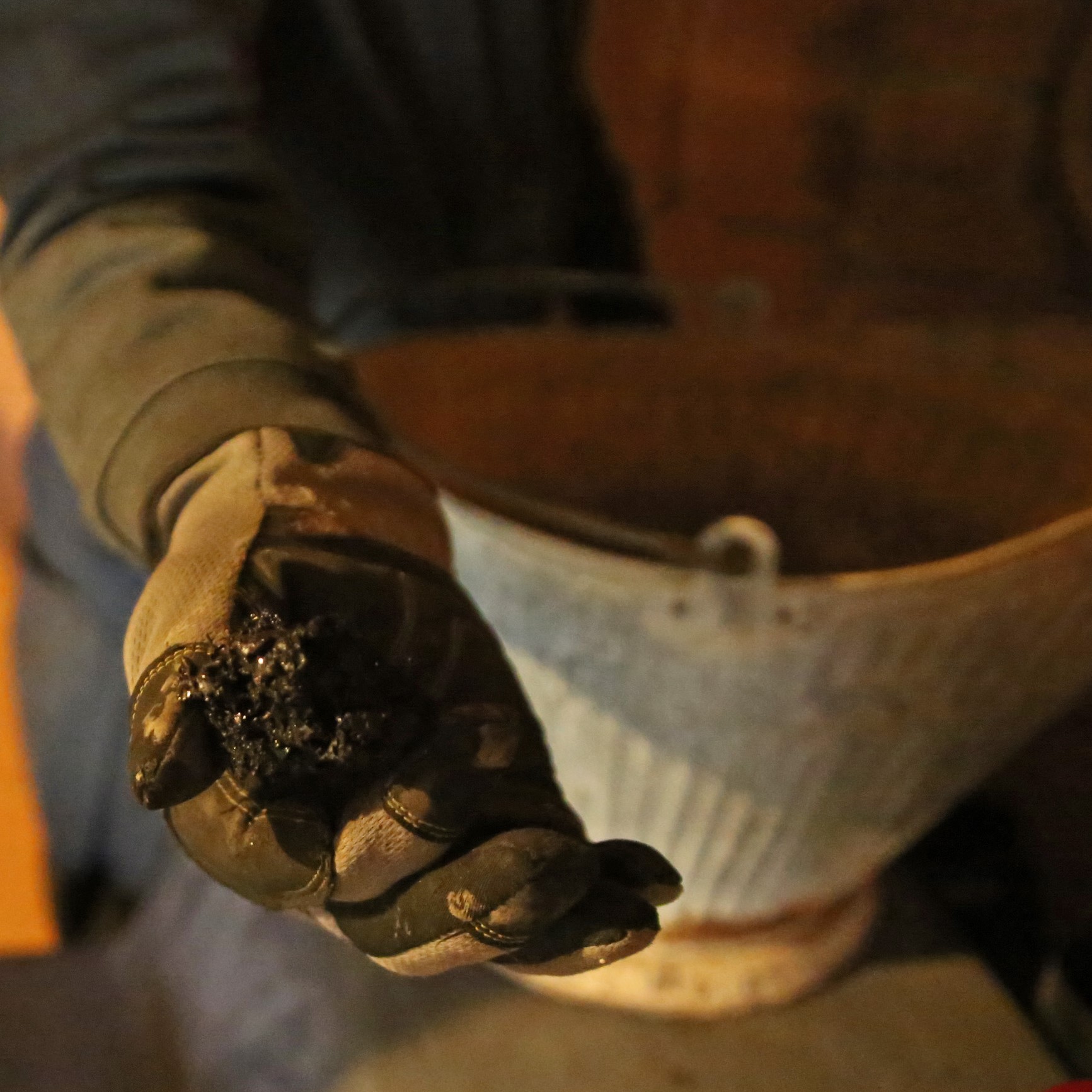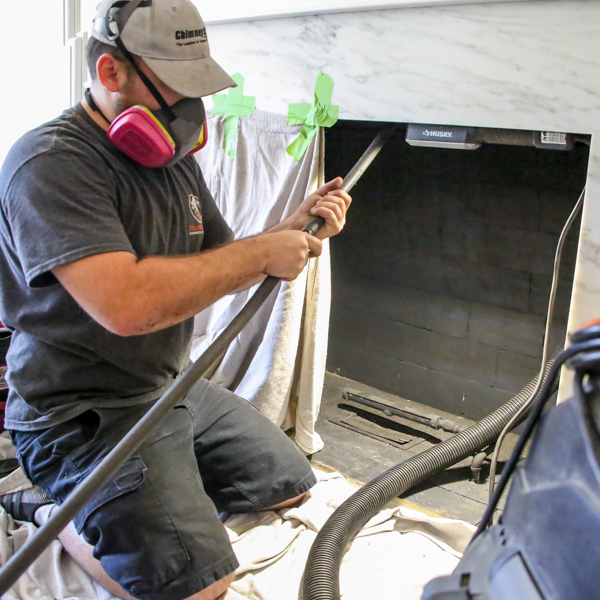How To Prepare for a Chimney Sweep
Many people brush their teeth before going to the dentist or clean their house before the housekeeper comes. It should come as no surprise that preparing your home for a chimney sweep is just as appreciated by professionals. There are many times that a chimney sweep arrives to do their job only to find that there are several other steps that must be done, such as moving furniture and removing items from mantels. While a professional will always do what’s necessary to get the job done right, there are a few things you can do to help make the process as painless as possible for everyone involved.
Avoid Using the Chimney for 24 to 48 hours
Chimney sweeps will need a fireplace that is cool to the touch for inspection. A hot fireplace is a hazard for the chimney sweep. If the fireplace is not cool, you risk receiving an incomplete cleaning or delaying your inspection & wasting valuable time.
 Put away your knickknacks.
Put away your knickknacks.
If you have priceless items on your mantel, be sure to move them to a temporary spot away from the chimney to keep them safe from accidents during chimney cleaning & inspection. Unfortunately, accidents do happen and the only way to avoid them entirely is to remove all treasured family pieces from the work area.
Consider removing logs and ash from the firebox
Removing logs and ash can help the chimney sweep provide a thorough inspection. It can also help mitigate the amount of dust and ash that might escape outside of the chimney during cleaning or inspection. Starting with a relatively clean slate will allow your professional to focus on problem areas and make them easier to spot.
Guard your Furniture
 Our chimney sweeps are CSIA certified and will take great care to cover floors and use high-powered vacuums to make sure your home looks exactly the way it did before the inspection. However, if you are concerned about your antique rug or white velvet sofa it wouldn’t hurt to be extra cautious and cover these items before your chimney sweep arrives.
Our chimney sweeps are CSIA certified and will take great care to cover floors and use high-powered vacuums to make sure your home looks exactly the way it did before the inspection. However, if you are concerned about your antique rug or white velvet sofa it wouldn’t hurt to be extra cautious and cover these items before your chimney sweep arrives.
Make Room
Keep in mind that there may be extra equipment needed for your cleaning or inspection. Make way by removing anything on the floor in front of your fireplace. Your professionals will want to put down a drop cloth so removing toys and other items from the floor will make that process easier.
Speak Up
Be sure and let your chimney sweep know of any questions or concerns you may have. Mention cracks, smells, sounds, etc so that he knows where to focus his time. Knowing the exact issues that you encounter can guarantee that your specific needs are addressed.
This post first appeared on https://www.mychimney.com

 The crown of a chimney is just as important as it sounds. The crown surrounds the top of the chimney and serves as an umbrella for the whole structure. Besides being a finishing touch, the crown protects your chimney from the eroding effects of water. A
The crown of a chimney is just as important as it sounds. The crown surrounds the top of the chimney and serves as an umbrella for the whole structure. Besides being a finishing touch, the crown protects your chimney from the eroding effects of water. A  This can point to excess age or water damage. Though bricks are notoriously durable they can deteriorate over time, leaving your chimney susceptible to all the hazards we mentioned, animals, water damage and eventual collapse.
This can point to excess age or water damage. Though bricks are notoriously durable they can deteriorate over time, leaving your chimney susceptible to all the hazards we mentioned, animals, water damage and eventual collapse. The weather is getting cooler and the Christmas decorations are out. There’s no doubt that firewood will be chopped for lighting up the fireplace this season. The most important thing is to have a
The weather is getting cooler and the Christmas decorations are out. There’s no doubt that firewood will be chopped for lighting up the fireplace this season. The most important thing is to have a  Many fires occur because of ashes being dumped in dangerous ways. The safest way to get rid of ashes is to make sure they are properly cooled and then placed in a fireproof container with a lid. The best practice is to keep this container away from anything flammable including wood or linen and at a distance of at least 10 feet from your home or other buildings.
Many fires occur because of ashes being dumped in dangerous ways. The safest way to get rid of ashes is to make sure they are properly cooled and then placed in a fireproof container with a lid. The best practice is to keep this container away from anything flammable including wood or linen and at a distance of at least 10 feet from your home or other buildings. The freeze and thaw effect.
The freeze and thaw effect. Leaks, mildew, and mold
Leaks, mildew, and mold Once the decision is made to
Once the decision is made to  Get The Gas Fireplace Logs Cleaned
Get The Gas Fireplace Logs Cleaned Creosote is of particular concern because it hardens into a dark, tarry, and highly flammable substance that is very difficult to remove without regular chimney sweeping. In addition, the intense fireplace heat or a burning ember can spark a chimney fire that can damage the flue liner and quickly spread throughout the house resulting in significant property damage and injuries. According to National Fire Protection Association (NFPA) statistics, most residential structure fires are due to creosote build-up in the chimney.
Creosote is of particular concern because it hardens into a dark, tarry, and highly flammable substance that is very difficult to remove without regular chimney sweeping. In addition, the intense fireplace heat or a burning ember can spark a chimney fire that can damage the flue liner and quickly spread throughout the house resulting in significant property damage and injuries. According to National Fire Protection Association (NFPA) statistics, most residential structure fires are due to creosote build-up in the chimney. Schedule an Annual Chimney Inspection & Cleaning
Schedule an Annual Chimney Inspection & Cleaning There isn’t any way to prevent
There isn’t any way to prevent  Chimney Creosote Can’t Be Fully Prevented
Chimney Creosote Can’t Be Fully Prevented